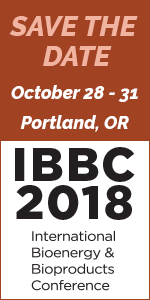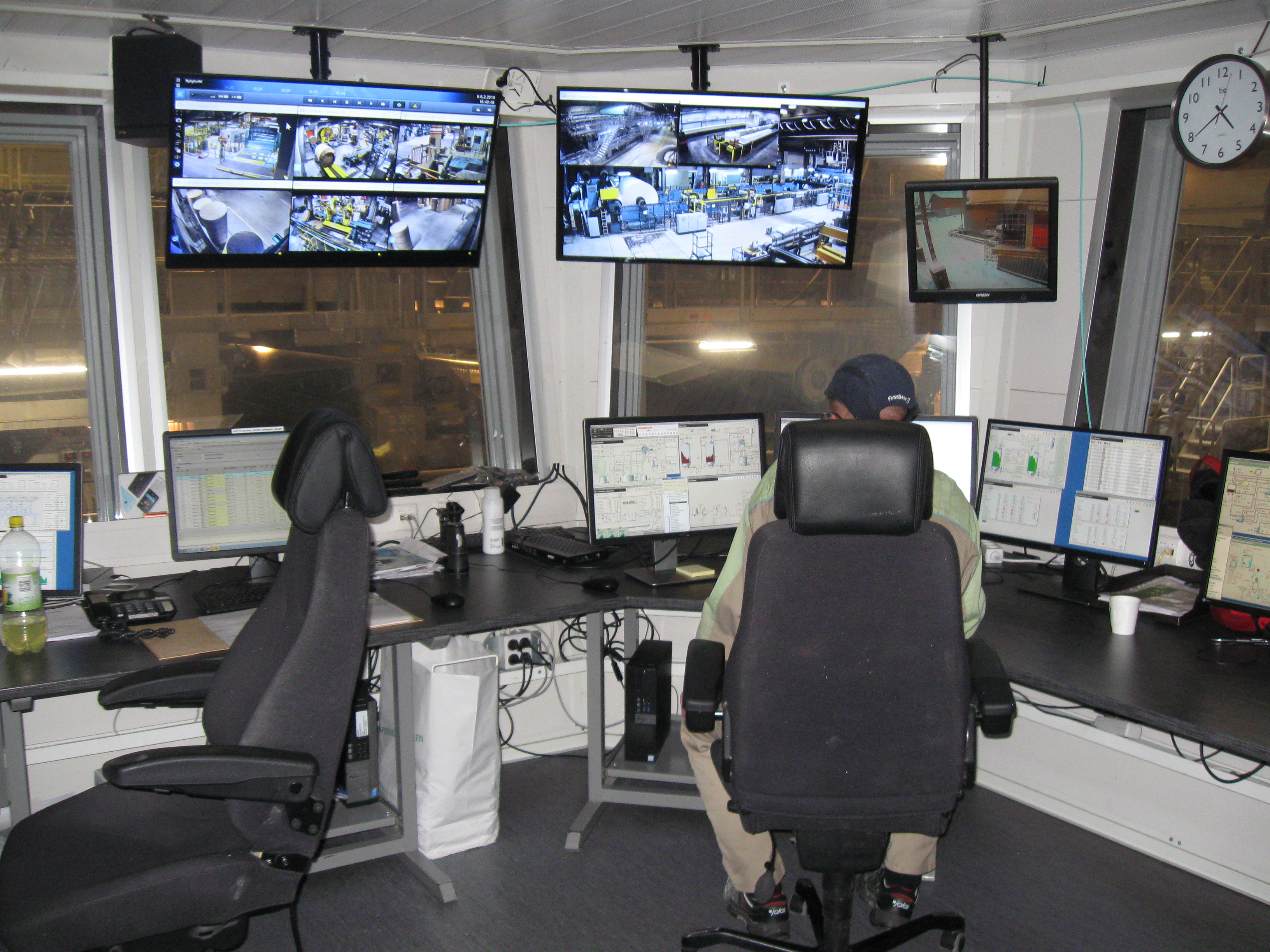| |
 · www.tappi.org
· www.tappi.org
· Subscribe
to Ahead of the Curve
· Newsletters
· Ahead
of the Curve archived issues
· Contact
the Editor

|
|
|
|
A Perennial Problem Solved
GRAEME RODDEN
Editor's note: This article appears in the current May/June 2018 issue of Paper360°. View the entire issue in its interactive, mobile-device-compatible new format here.)
More than 100 years ago, a sulfite pulp mill was built in Kotka in eastern Finland. Paper machines were added in the 1950s and, over time, produced a variety of papers.

The control room for the machines sits between the wet ends.
Through the years, the owners continually invested: different papers, different pulps, even different owners. After being part of the Stora Enso family, in 2010 the mill was sold to Open Gate, which established a separate company and christened it Kotkamills.
In 2015, MB Funds (along with four other partners, including some of the mill staff) purchased the company. MB holds 51.9 percent of the shares. Turnover for the company in 2018 is expected to reach EUR 350-400 million (about US$435-500 million). By 2020, CEO Markku Hämäläinen says this should leap to roughly EUR 500 million by 2020. Why? A look at the innovations the mill has implemented will provide the explanation.
The mill runs two paper machines. PM 1 produces laminating paper. However, it is PM 2 that is the focal point now. At the end of January 2017, Kotkamills commenced a massive rebuild of PM 2 (now BM 2) to produce mostly folding boxboard. Previously, it produced graphic paper after starting life as a sack kraft paper machine in the 1950s.
The EUR 200-million (US$249 million) investment, known as the Flying Eagle project, provided a basically new paper machine. The mill now has the technology to produce food service boards such as cup stock with no need for a plastic barrier coating. This means that disposable drink cups (hot or cold), long the scourge of environmentalists, can be composted or recycled.
The mill started producing the product at the end of July 2017. Although still primarily (85 percent) a producer of folding boxboard, the mill is looking at a future 50:50 split.
Hämäläinen says that once the market accepts Kotkamills' new product, "It will be a fast entry. We need to change from plastics. We can ensure the recycling of fast food packaging."
He cites the example of China where fast food consumption is "exploding." He adds that the paper cup market is growing rapidly in Europe—3-5 percent annually, which would mean a demand of 250,000 metric tons by 2020. "We are well placed to grow," Hämäläinen says. "The food service board globally is developing and should reach 3.9 million metric tons by 2020."
Giving some more statistics, Hämäläinen notes that overall in Europe, plastics account for 25 percent of municipal waste; only 7 percent is recycled. At the 2018 Davos World Economic Forum, which attracts the power brokers of the globe, 11 major corporations, including Pepsi and Unilever, committed to using 100 percent reusable or compostable packaging by 2025.
Some 58 billion paper cups end up in US landfills annually. A plastic-coated paper cup takes more than 20 years to decompose, says Hämäläinen. In surveys, consumers have said that recycling tops the list of properties they want their packaging to have, followed by reduced energy and compostability. If at all possible, they don't want it sent to landfill.
"We want to make it easier for paper cups to be recycled," Hämäläinen says. "Liquid packaging board can be made with a reduced amount of plastics."
For cup stock (including disposable plates), Kotkamills produces the ISLA range, either Solo- or Duo-Barrier—that is, a water-based dispersion barrier on one or both sides. There are also ISLA Plate Base, ISLA Cup Base and ISLA Light (board for plates with an integral grease barrier).
For FBB, the product is called AEGLE. This is a range of water-based dispersion coated barrier boards designed for products that need to be protected from water, moisture vapor, and grease. There is AEGLE Barrier Light and AEGLE Barrier Plus. Kotkamills also produces uncoated FBB in the AEGLE family.
Both cup and board product lines are recyclable with normal paper waste and will disintegrate and not accumulate in landfills. The barrier is more than 90 percent biodegradable in industrial composting. Test results were 99.5 percent.
With the new coating section on BM 2, the mill can apply two layers simultaneously on each side of the web with its curtain coater. There is also a blade coater so that up to seven barrier layers can be applied online.
Super Startup
The rebuild of BM 2 started in January 2017 and startup happened almost six months to the day after. Stock prep was changed with new approach system, mixing tanks as well as a POM system being added. Efficiency on BM 2 since startup has been more than 80 percent. Maximum basis weight is 550 g/m2.
BM 2 can now produce 400,000 metric tpy. Construction went well despite very tight quarters in the mill. PM 1 and BM 2 sit side-by-side with only about 10 m between them. During construction, the mill did not need to stop PM 1.
Although the new boards are less than a year old, they have already earned recognition. Kotkamills took home first prize in the Urbanization category of the New Wood 2017 bioeconomy competition in Helsinki.
About the author:
Graeme Rodden is senior editor North and South America for Paper360°. You can reach him at grodden@tappi.org
For a modest investment of $174, receive more than US$ 1000 in benefits in return.
Visit www.tappi.org/join for more details. |
|




